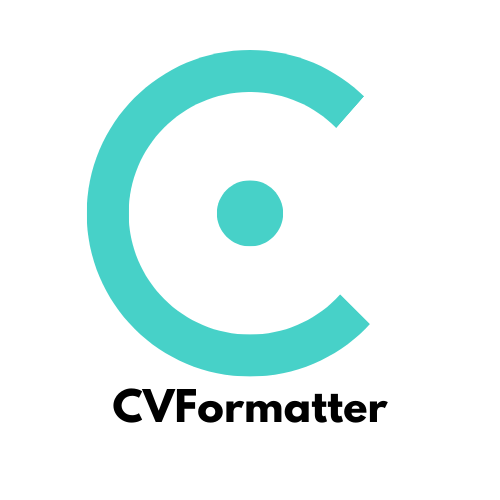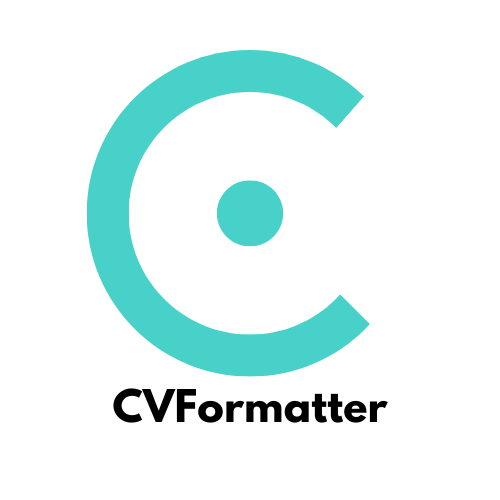A Comprehensive Guide to 360 Recruitment in 2025

Recruitment in 2025 demands a more holistic approach, and that’s where 360 recruitment comes into play. This end-to-end hiring model covers every step, from sourcing candidates to onboarding them seamlessly. It ensures you evaluate candidates comprehensively, reducing biases and improving hiring outcomes.
The significance of 360 recruitment lies in its ability to address modern hiring challenges. For instance, 69% of organizations struggle to find suitable candidates, and delays in hiring can cost up to $98,000. By adopting this model, you can reduce costs, fill positions faster, and enhance candidate satisfaction. A smooth onboarding process, prioritized by 86% of candidates, becomes a reality with this approach.
Tip: Use tools to reformat resumes with AI and streamline your hiring process further.
Key Takeaways
360 recruitment includes all steps, from finding to hiring workers. It makes the process smooth and improves the experience for candidates.
Using this method can save time and money. Companies say they cut hiring time by 50% with AI tools.
A good company image brings in great workers. Show your values and culture to get better results.
Check and improve your hiring process often. Use feedback and data to make it work better.
Teaching recruiters to handle everything keeps things steady and helps hire better workers.
What is 360 Recruitment and Its Importance in 2025?

Definition of 360 Recruitment
360 recruitment, also known as the 360 recruitment model, is a comprehensive hiring approach that covers every stage of the recruitment lifecycle. It begins with sourcing candidates and continues through screening, selection, hiring, and onboarding. Unlike traditional methods, this model ensures a seamless and consistent process by involving a single recruiter or team throughout the full life cycle recruitment. This approach emphasizes thorough evaluation, reducing risks and improving the quality of hires.
The 360 recruitment model focuses on several core principles:
Multi-source feedback, which gathers input from peers, supervisors, and subordinates to provide a well-rounded view of the candidate.
Skills and competency assessments, which evaluate job-related abilities through simulations and behavioral interviews.
Cultural fit evaluation, ensuring alignment between the candidate’s values and the company’s culture.
Potential and growth assessment, which examines the candidate’s future aspirations and ability to grow within the organization.
Why 360 Recruitment Matters in 2025
The recruitment landscape in 2025 presents unique challenges, making 360 recruitment more critical than ever. Companies face a growing talent shortage, with 69% struggling to find suitable candidates for specialized roles. Delays in hiring can cost businesses an average of $98,000 per open position annually. Additionally, candidates increasingly prioritize a smooth onboarding experience, with 86% considering it a key factor when evaluating job offers.
Adopting 360 recruitment allows you to address these challenges effectively. This model streamlines the recruitment process, reduces hiring delays, and enhances candidate satisfaction. Organizations using AI-powered tools within this framework report a 50% reduction in hiring time, demonstrating the efficiency of combining technology with a full-cycle recruitment approach.
Evidence Type | Statistic | Source |
|---|---|---|
Talent Shortage Impact | 69% of organizations struggle to find suitable candidates for specialized roles. | |
Cost of Hiring Delays | Delayed hires can cost companies an average of $98,000 per open position annually. | |
Candidate Satisfaction | 86% of candidates prioritize a smooth transition and onboarding experience when evaluating job offers. | |
AI in Recruitment | Companies using AI-powered recruitment tools report a 50% reduction in hiring time. |
Key Features of 360 Recruitment
The 360 recruitment model stands out due to its strategic and holistic approach. It ensures a thorough and efficient recruitment lifecycle, saving time and reducing costs while enhancing the candidate experience. Key features include:
Multi-source feedback from peers, subordinates, and supervisors.
Skills and competency assessments beyond traditional resume reviews.
Cultural fit evaluation to ensure long-term success.
Potential and growth assessment focusing on development within the company.
This end-to-end recruitment model offers greater control over each hiring step, reducing risks and improving the quality of hires. By involving one 360 recruiter throughout the process, it fosters trust and rapport with candidates, ensuring a seamless experience from start to finish.
The Process of 360 Recruitment
Stage 1: Preparation
Preparation is the foundation of the 360 recruitment process. It ensures you have a clear understanding of the role and the type of candidate you need. Follow these steps to set the stage for success:
Define the ideal candidate persona: Create a semi-fictional profile of your perfect candidate. Include their skills, traits, and characteristics. This helps you focus on finding the right fit.
Write a compelling job description: Clearly outline the role's responsibilities and expectations. Highlight your employer brand, salary range, perks, and company values to attract top talent.
By investing time in preparation, you streamline the recruitment process and improve the chances of finding the best candidate.
Tip: Use AI tools to analyze job descriptions and ensure they align with industry standards.
Stage 2: Sourcing
Candidate sourcing and engagement are critical to finding the right talent. In the 360 recruitment process, you should adopt a proactive approach to sourcing. Here are some effective strategies:
Build a talent pipeline that includes both active and passive candidates.
Use job platforms, social media, and employee referrals to reach a wider audience.
Leverage advanced tools like Applicant Tracking Systems (ATS) and AI-powered recruitment software to identify and engage passive candidates.
Proactive sourcing ensures you always have access to a pool of qualified candidates, reducing the time it takes to fill open positions.
Stage 3: Screening
Screening and selecting candidates is a crucial step in the 360 recruitment process. This stage involves evaluating candidates to ensure they meet the role's requirements. Best practices include:
Conducting simulations to test how candidates apply their knowledge in real-world scenarios.
Using behavioral interviews to understand past experiences and predict future performance.
Additionally, background checks and reference calls provide a comprehensive evaluation of each candidate. These methods help you identify the most qualified individuals for the role.
Note: A thorough screening process reduces the risk of hiring mismatches and improves the quality of hires.
Stage 4: Selection
The selection stage is where you identify the best candidate for the role. This step in the 360 recruitment process involves evaluating shortlisted candidates through structured methods. You should focus on objective decision-making to ensure fairness and accuracy.
Here are some effective strategies for the selection stage:
Conduct panel interviews: Involve multiple stakeholders to assess candidates from different perspectives.
Use scoring systems: Rate candidates based on predefined criteria, such as skills, experience, and cultural fit.
Evaluate soft skills: Assess communication, teamwork, and problem-solving abilities through situational questions.
You can also use AI-powered tools to analyze interview responses and predict candidate success. These tools enhance decision-making by providing data-driven insights.
Tip: Always document your evaluation process to maintain transparency and consistency.
Stage 5: Hiring
The hiring stage finalizes the recruitment process by extending an offer to the selected candidate. This step requires clear communication and a well-structured approach.
Follow these steps to ensure a smooth hiring process:
Prepare a detailed offer letter: Include salary, benefits, and job responsibilities.
Communicate promptly: Reach out to the candidate quickly to maintain their interest.
Negotiate effectively: Be open to discussions about compensation or other terms.
Once the candidate accepts the offer, confirm the start date and provide them with any necessary pre-joining information. A seamless hiring process leaves a positive impression and sets the tone for the candidate's journey with your organization.
Stage 6: Onboarding
Onboarding is the final stage of the 360 recruitment process. It ensures the new hire integrates smoothly into your organization. A strong onboarding program boosts employee engagement and retention.
Here’s how you can create an effective onboarding experience:
Provide a welcome kit: Include essential tools, resources, and company swag to make the new hire feel valued.
Assign a mentor or buddy: Pair the new hire with an experienced employee to guide them through their initial days.
Set clear goals: Outline expectations and milestones for the first 90 days.
Digital onboarding platforms can streamline this process by automating paperwork and providing interactive training modules. A well-executed onboarding process ensures the new hire feels confident and prepared to contribute to your team.
Note: Studies show that effective onboarding can improve employee retention by up to 82%.
Benefits of 360 Recruitment

Efficiency and Streamlined Processes
The 360 recruitment model simplifies the hiring process by covering every stage under one cohesive framework. This approach ensures that you can quickly identify and select the right candidates without unnecessary delays. By assigning a single recruiter or team to oversee the full cycle recruitment, communication improves, and bottlenecks are minimized.
Here’s how this model enhances efficiency:
It covers every aspect of the hiring process, from sourcing to onboarding, ensuring no steps are overlooked.
It reduces wasted resources by streamlining tasks and eliminating redundant steps.
It allows for personalized interactions with candidates, which improves engagement and decision-making.
For example, companies using this model report better hiring efficiency and reduced costs. By consolidating the recruitment process, you can save time and focus on finding the best talent for your organization.
Tip: Use AI-powered tools to further streamline the recruitment process and reduce hiring time by up to 50%.
Enhanced Candidate Experience
A seamless and engaging recruitment process can significantly impact how candidates perceive your organization. The 360 recruitment model ensures candidates feel valued and informed at every stage. This personalized approach not only improves their experience but also strengthens your employer brand.
Key benefits include:
Candidates receive consistent communication throughout the hiring process.
Personalized interactions at every stage make candidates feel more connected to your company.
A streamlined process reduces confusion and enhances engagement.
When candidates have a positive experience, they are more likely to accept your offer and recommend your company to others. This model ensures you build strong relationships with potential hires, setting the stage for long-term success.
Cost-Effectiveness
The 360 recruitment model helps you save money by optimizing the hiring process. By reducing wasted resources and unnecessary steps, you can lower the overall cost of recruitment. For instance, delayed hires can cost companies an average of $98,000 per open position annually. Streamlining the process not only saves time but also minimizes these financial losses.
Additionally, integrating AI tools into the 360 recruitment framework can cut hiring time in half. This efficiency translates into significant cost savings, allowing you to allocate resources more effectively. A well-executed recruitment process ensures you get the best value for your investment while maintaining high-quality hires.
Improved Quality of Hires
The 360 recruitment model significantly improves the quality of hires by ensuring a thorough and structured recruitment process. This approach evaluates candidates holistically, focusing on their skills, cultural fit, and potential for growth. You gain a deeper understanding of each candidate, which helps you make better hiring decisions.
One of the key advantages of this model is its ability to reduce hiring mismatches. By assessing candidates through multiple stages, such as simulations, behavioral interviews, and reference checks, you can identify individuals who truly align with your organization's needs. This reduces the risk of turnover and ensures long-term success.
Tip: Use data-driven tools to analyze candidate performance during interviews. These insights can help you predict their future success in the role.
The 360 recruitment model also emphasizes cultural fit. Candidates who share your company's values and work ethic are more likely to thrive in their roles. This alignment fosters a positive work environment and boosts team productivity.
Additionally, this model allows you to focus on candidates' growth potential. By evaluating their aspirations and ability to adapt, you can hire individuals who will grow with your organization. This forward-thinking approach ensures you build a team that remains competitive in the long term.
When you adopt 360 recruitment, you create a hiring process that prioritizes quality over quantity. This ensures you bring in top talent who contribute to your organization's success.
Challenges of 360 Recruitment and Solutions
Common Challenges
Implementing 360 recruitment comes with its own set of challenges. You may encounter issues that can disrupt the recruitment process if not addressed effectively. Here are some of the most common obstacles:
Workload Overload: Managing every stage of the recruitment process can lead to burnout and reduced service quality.
Time Management: Balancing the needs of clients and candidates requires strong prioritization skills.
Attracting Top Talent: Competing for skilled candidates demands creativity and innovative sourcing strategies.
Maintaining Relationships: Building rapport with candidates becomes difficult when juggling multiple roles.
Specialized Skills: Staying updated on industry trends requires ongoing training.
Scalability Issues: High-volume hiring can overwhelm a single recruiter or team.
Miscommunication: Misunderstandings can arise without clear communication between stakeholders.
Client and Candidate Satisfaction: Managing expectations is crucial to ensure a positive experience for everyone involved.
These challenges highlight the complexity of 360 recruitment and the need for strategic solutions to overcome them.
Strategies to Overcome Challenges
You can address these challenges by adopting proven strategies that streamline the recruitment process and improve outcomes. Here are some effective approaches:
Streamline Processes: Simplify workflows to reduce in-house recruitment efforts. Use technology to automate repetitive tasks, such as feedback collection and candidate tracking.
Invest in Training: Equip recruiters with the skills needed to evaluate candidates effectively and stay updated on industry trends.
Set Clear Timelines: Establish deadlines for each stage of the recruitment process to improve time management.
Enhance Communication: Maintain regular updates with candidates and stakeholders to avoid misunderstandings.
Strategy | Description |
|---|---|
Time Management | Use tools to automate scheduling and feedback collection. |
Bias Mitigation | Train recruiters to recognize biases and use standardized evaluation tools. |
Cost Control | Focus on high-value roles and choose affordable assessment tools. |
Effective Communication | Ensure all parties understand their roles and responsibilities. |
Tip: View the time spent gathering feedback as an investment. A thorough recruitment process saves time and resources in the long run.
By implementing these strategies, you can overcome the challenges of 360 recruitment and create a more efficient and effective hiring system.
Comparing 360 Recruitment to Other Models
360 Recruitment vs. 180 Recruitment
Understanding the differences between 360 and 180 recruitment models can help you choose the right approach for your organization. The 180 recruitment model focuses on speed and efficiency. It specializes in sourcing and presenting qualified candidates quickly. In contrast, the 360 recruitment model manages the entire recruitment process, from identifying hiring needs to onboarding new employees. This makes it more comprehensive but also more time-intensive.
Here are the key distinctions between the two models:
180 recruitment emphasizes candidate delivery, making it ideal for urgent hiring needs.
360 recruitment covers all recruitment phases, ensuring a seamless experience for both employers and candidates.
180 recruiters often develop deep expertise in specific industries or roles due to their narrower focus.
360 recruiters handle multiple stages, offering a broader understanding of client needs and organizational goals.
If your priority is speed, the 180 model may suit you better. However, if you value a thorough and consistent hiring process, the 360 model provides a more holistic solution.
Choosing the Right Model for Your Needs
Selecting the best recruitment model depends on your organization's unique requirements. Factors such as company size, hiring volume, budget, and internal resources play a crucial role in this decision. For smaller companies or those with limited resources, the 180 model offers a cost-effective and efficient solution. It allows you to focus on filling roles quickly without overextending your team.
On the other hand, the 360 recruitment model is ideal for organizations seeking a comprehensive approach. It ensures every aspect of the recruitment process is managed effectively, from sourcing to onboarding. This model works well for companies with higher hiring volumes or those aiming to build long-term relationships with candidates.
When deciding, evaluate the advantages and disadvantages of each model. Consider how they align with your growth and scalability goals. A thoughtful choice will help you create a recruitment strategy that meets your needs and supports your organization's success.
Actionable Tips for Implementing 360 Recruitment in 2025
Leverage Recruitment Technology
Recruitment technology plays a pivotal role in optimizing the 360 recruitment model. By integrating advanced tools, you can streamline the recruitment lifecycle and enhance efficiency. Modern recruitment software offers features like AI-driven candidate sourcing, automated screening, and personalized onboarding. These tools save time and improve decision-making.
Here are some technologies you can adopt:
Arya by Leoforce: Uses AI to source candidates and automate shortlisting.
Humanly: Engages candidates through AI-powered interactions and scheduling.
Pomato: Analyzes resumes and creates tailored skills tests.
Zoho Recruit: Provides an applicant tracking system with customizable workflows.
Fingerprint for Success: Focuses on team dynamics and work style compatibility.
Enboarder: Enhances onboarding with personalized content for new hires.
Recruitment automation not only reduces manual tasks but also ensures a seamless end-to-end recruitment process. By leveraging these tools, you can focus on building stronger connections with candidates.
Tip: Use AI-powered tools to analyze candidate data and predict hiring success.
Train Recruiters for End-to-End Management
To implement full cycle recruitment effectively, you need to equip your recruiters with the right skills. Training ensures they can manage every stage of the recruitment lifecycle, from sourcing to onboarding. This approach fosters consistency and improves the quality of hires.
Focus on these areas during training:
Candidate Evaluation: Teach recruiters to assess skills, cultural fit, and growth potential.
Communication Skills: Help them build rapport with candidates and stakeholders.
Technology Proficiency: Train them to use recruitment software and analytics tools.
Time Management: Equip them to handle multiple tasks efficiently.
Well-trained recruiters can handle full desk recruitment with confidence, ensuring a smooth and professional experience for candidates and clients alike.
Note: Continuous learning keeps recruiters updated on industry trends and best practices.
Focus on Employer Branding
A strong employer brand attracts top talent and enhances the recruitment process. Candidates often evaluate a company’s reputation before applying. Research shows that 75% of job seekers consider employer branding crucial, and companies with a positive image receive 50% more qualified applicants.
Evidence | Description |
|---|---|
69% of job seekers | Would reject a job offer from a company with a bad reputation. |
75% of job seekers | Consider an employer’s brand before applying for a job. |
50% more qualified hires | Companies with strong branding attract significantly better candidates. |
To strengthen your employer brand:
Highlight your company’s values and culture in job descriptions.
Share employee success stories on social media.
Engage with candidates through personalized communication.
A compelling employer brand not only attracts candidates but also improves their experience throughout the recruitment lifecycle.
Tip: Showcase your company’s commitment to employee growth and innovation to stand out in the competitive job market.
Use Data-Driven Decision-Making
Data-driven decision-making transforms how you approach hiring. By analyzing recruitment data, you can identify trends, predict outcomes, and make informed choices. This method ensures that every step of your recruitment process is backed by evidence, reducing guesswork and improving results.
Start by collecting data from various stages of the hiring cycle. Track metrics like time-to-hire, cost-per-hire, and candidate drop-off rates. Use this information to pinpoint inefficiencies and areas for improvement. For example, if you notice a high drop-off rate during interviews, you might need to refine your interview process or improve communication with candidates.
Leverage tools like applicant tracking systems (ATS) and recruitment analytics platforms. These tools help you organize data and generate actionable insights. For instance, AI-powered platforms can analyze candidate profiles to predict their suitability for a role. This saves time and ensures you focus on the most promising candidates.
Tip: Use dashboards to visualize key metrics. Clear visuals make it easier to spot patterns and share insights with your team.
Data-driven strategies also help you measure the success of your recruitment efforts. By comparing metrics over time, you can evaluate the effectiveness of changes and continuously refine your approach. This ensures your hiring process evolves to meet the demands of a competitive job market.
Continuously Optimize the Recruitment Process
Optimization is an ongoing effort. To stay competitive, you must regularly evaluate and improve your recruitment process. Start by gathering feedback from candidates and hiring managers. Their insights can reveal pain points and highlight opportunities for improvement.
Streamline workflows by automating repetitive tasks. Tools like chatbots can handle initial candidate inquiries, while scheduling software simplifies interview coordination. Automation not only saves time but also reduces errors, ensuring a smoother experience for everyone involved.
Regularly update your job descriptions and sourcing strategies. The job market evolves, and so do candidate expectations. Ensure your postings reflect current trends and highlight what makes your company unique.
Note: Small changes, like improving communication or shortening response times, can significantly enhance the candidate experience.
Finally, monitor key performance indicators (KPIs) to track progress. Metrics like time-to-fill and quality-of-hire provide valuable insights into your process's efficiency and effectiveness. Use these insights to make data-backed adjustments and keep your recruitment strategy aligned with your goals.
The 360 recruitment model offers a comprehensive approach to the recruitment process, covering every stage from preparation to onboarding. It enhances hiring efficiency, improves candidate experience, and reduces costs by involving a single 360 recruiter throughout. Adopting this model in 2025 ensures you stay competitive by attracting top talent and fostering long-term relationships. Future trends like AI-powered tools and personalized recruitment strategies will further revolutionize hiring. These advancements streamline sourcing, automate screening, and create tailored candidate experiences, making 360 recruitment an essential tool for organizational growth.
FAQ
What makes 360 recruitment different from traditional hiring methods?
360 recruitment covers every stage of hiring, from sourcing to onboarding, in one seamless process. Traditional methods often split these tasks among different teams. This model ensures consistency, reduces delays, and improves the candidate experience.
Tip: Use 360 recruitment to streamline your hiring and build stronger relationships with candidates.
Can small businesses benefit from 360 recruitment?
Yes, small businesses can benefit greatly. This model simplifies hiring by consolidating tasks under one recruiter or team. It saves time, reduces costs, and ensures a better fit for your organization.
How does technology enhance 360 recruitment?
Technology automates repetitive tasks like resume screening and interview scheduling. AI tools analyze candidate data, predict success, and improve decision-making. These tools make the process faster and more efficient.
Tool Example | Functionality |
|---|---|
Arya by Leoforce | AI-driven candidate sourcing |
Zoho Recruit | Applicant tracking and workflow management |
Is 360 recruitment suitable for high-volume hiring?
Yes, it works well for high-volume hiring. By using automation and streamlined workflows, you can manage multiple roles efficiently. This model ensures quality while handling large-scale recruitment needs.
How can you measure the success of 360 recruitment?
Track metrics like time-to-hire, cost-per-hire, and candidate retention rates. These indicators show how well your process works. Use data to identify areas for improvement and optimize your strategy.
Note: Regularly reviewing your metrics ensures continuous improvement in your recruitment process.
See Also
Leveraging AI Resume Formatting For Efficient Recruitment Processes

